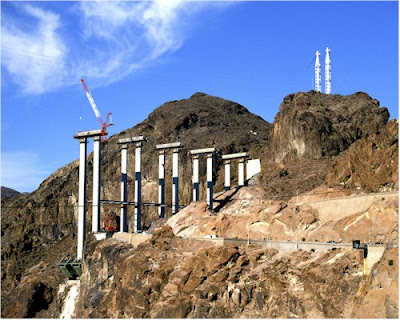So, last night I was thinking about the relative frequency of different last names. The frequency at which one sees names in the United States is a function of both how many people have come to America from the country of the name's origin, and the frequency at which the name appears in its home country. Obviously there are complications to this, through intermarriage, the legacy of slavery, and Anglicizations or simplifications of immigrants' names, and that's not even accounting for the differences in ethnic distribution around this country or the vagaries of people with certain names immigrating (or reproducing) more than others.
So, anyway, some countries have a handful of names that are very common, and others have a lot more variety in their surnames. Nguyen, for example, is extremely common in Vietnam. Korea is dominated by just a few surnames; I remember attending a World Baseball Classic game in which the South Korean team
fielded a lineup with five Lees. One could easily produce a list of common Chinese or Spanish surnames, and we can produce a list of common English names, even with the island of Great Britain being a nexus of Celtic, Nordic, and Norman influence.
But what of Italian names? Quick, try to think of a "typical Italian name." It's easy to think of famous Italian-Americans, but how common are their last names?
Sinatra,
Scorsese, and
Cuomo are famous people, but I don't know of anybody else not related to them sharing their names.
(ADDENDUM: How could I forget Weezer frontman Rivers Cuomo?) I even did a little thought experiment to try to think of unrelated famous people sharing the same Italian name, and the only two sets I could think of were:
(1)
Enrico Caruso (who wasn't American), actor
David Caruso, and developer
Rick Caruso (stretching the definition of famous), and
(2) the winemaking
Gallo brothers and actor/director
Vincent Gallo.
Can you come up with any others?
Checking the Census Bureau, Italian ancestry is the
4th-most-commonly reported European ancestry in the U.S., behind German, Irish, and English. About 13,000,000 Americans report Italian ancestry. Asian, Islander, Native American, and Hispanic ancestry is counted separately. But if we check
this list of the most common surnames in the U.S., you'll have to scroll a long way down before you reach your first unambiguously Italian name. How far? All the way down to the 753rd-most-common surname, Russo. The next Italian names to appear are Bruno (#1314), Marino (#1410), and Romano (#1579).
Most of the top names on the list are of English, Irish, or other British origin. Spanish names are also quite common. German names are uncommon but do appear higher than any Italian ones, with Wagner at #171, Weber at #323, Schneider at #329, etc. French names are also a bit sparse, as there's some ambiguity for names like Lambert (#292) and Richard (#506), but an unambiguously French name like LeBlanc shows up at #683, and Cajun ones like Landry start showing up at #695. Cohen (Jewish) is at #363, and Scandinavian names like Christiansen (#435) and Olsen (#583) are fairly high, especially considering that the Census Bureau doesn't consolidate alternate spellings (Olson is at #175).
What about non-European names? For reference, here is the Census's ranking of selected Asian groups. There are only about 1.1 million Vietnamese Americans, yet Nguyen ranks at #229 on the name list. There are slightly fewer Koreans, and Kim, a common Korean name, is #233. Chinese are the most common Asian group, but the most common unambiguously Chinese names are Wong (#459), Chang (#687), and Chen (#720). The name Lee (#24) is something of a special case, because not only is it a common name in both China and Korea, but it's also a common Scottish name.
Scrolling through the list, I came across some other interesting placements. The highest Indian name is Patel at #591, and Singh is next at #1306. The highest-ranking names from the Muslim world are Khan (#1728) and Ali, virtually tied at #1733. I noticed two common Navajo names, Yazzie (#1855) and Begay (#1897), just below those. I may have missed one higher up, but the highest unambiguously Portuguese name I noticed was Ferreira at #1591 and the highest unambiguously Dutch name I could find was Van Dyke, way down at #2487. I didn't notice any Slavic names on the list before my eyes glazed over, and the highest Hungarian name I found was Nagy at #3322.
I was scanning the list for a while before I realized I hadn't seen any Japanese names. Despite there being slightly fewer Japanese in this country than there are Koreans or Vietnamese, no Japanese name placed higher than #3565, Tanaka.
Well, I don't have any big conclusions to make; I mostly just looked this stuff up to satisfy curiosity and nothing else. In order to really study any of this, we'd have to get into the history of when and how people began to adopt surnames in different countries.
Wikipedia says, for example, that Japanese commoners only adopted surnames under the Meiji restoration and had a good amount of leeway in what names they chose, which explains the name diversity. I suppose one could hypothesize that Italians don't have any dominating names because the country was divided politically until the 19th century. But the same could be said about the Germans, and they placed a lot of names higher than Russo.
DISCLAIMER: I got this information from scanning a very long list, and I can't be sure I didn't miss anything. Also, it's not like I have perfect knowledge of the national origins of all the names on the list, either. I only found out last year (after watching
The Departed) that Costello (#1297), which totally sounds Italian,
is actually Irish.
















